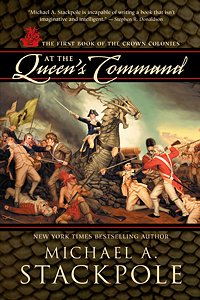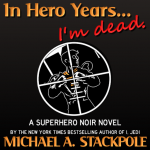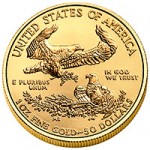Price isn’t the point
Discussions have been raging for a while among self-published authors about ebooks and price points. They break down into three major schools:
The Buck Stops Here School. For these folks, 99 cents is the price point. They see a lot of sales of books at that price point, figuring that no one is going to blanche at spending a dollar and taking a chance on buying something that stinks. As one author boldly suggested, by pricing his stuff at .99, he forces others who price their books at $9.99 to prove their work is ten times better than his. To be sure, there are a lot of ebooks which get sold at .99 cents; though because that price is below the magick $2.99 price point, Amazon (and other retailers) only pay 35% of the price to the authors, instead of 70%.
The Three’s a Lucky Number School. Here, the price point of choice is $2.99 for two reasons. First, as noted above $2.99 is the lowest price at which online retailers will return 70% of the revenue to authors. Second, and decidedly more dubious, is data from some poorly-constructed pricing research experiments what confirm, in the minds of some, that $2.99 is the perfect price to entice a reader to buy a novel. There are lots of folks who have sold novels at this price point and who are very happy with the results.
The My Stuff Is Worth More Than That School. The adherents of this school charge prices ranging from $5 up to a mass market’s paperback price. I generally fall into this school, figuring that if I charge $1 an hour for reading entertainment (10,000 words taking the average reader roughly an hour to consume), I’m doing okay, and the charge is reasonable. If it’s a long novel, I’ll usually cap the price around $6, and even toss in bonus material. The price isn’t unreasonable for the consumers, and the return is equitable for writers.
The debates can be pretty fierce. .99 centers point out that by having a low introductory price lots of readers can be enticed to sample. The Stuffy folks counter that while lots of folks eat hamburgers off the dollar menu, not all meat gets sold as ground beef. They charge what they see as a premium price for premium work. The folks in the middle think the other two schools are silly, since they’ve hit on the perfect price point, proven by science, and they have the screen caps of payouts to prove it.
But, as the title of this post indicates, price is not the point. At least, not the only point—it’s a crucial variable, but not the only variable. Anyone who thinks that a particular price is the magick bullet that will turn them into the next J. K. Rowling is so completely out of touch with reality that they’re not so much writers of fiction as they are correspondents embedded in some other world. To be fair, anyone who thinks that readers will buy no matter what the price is are equally insane. We have a name for them: traditional publishers.
It’s important to bear a couple things in mind here. The first book to sell over a million units on the Kindle was The Girl With the Dragon Tattoo. Kindle price point: $9.99. James Patterson broke into that club fairly soon after, and his books sell from between $7.99 to $14.99.
Given that data set as a counter-balance to the .99 centers; and acknowledging that authors in the same genre, offering similar work at the same prices can have wildly divergent sales numbers, let’s pull prices out of the equation. What does this leave us with?
The immediate, knee jerk reaction is to dismiss high sales by well-known authors with the, “Well, they’re established, so they already have an audience” argument. The problem with that dismissal is that it directs hopefuls away from look at how these authors got established. Since we know that some of the most popular authors in the digital self-publishing field, like Amanda Hocking, weren’t even on the radar until they started selling ebooks, we have to ask how did they get established; and how do the already established authors maintain their presence in this new world? If that’s not a pursuit, then new authors end up believing that 99 cents for a novel is the magick price, or that $2.99 is the magick price, and when they do nothing but adjust prices up and down, they’ll get frustrated—rightfully so.
Another monster variable is genre. Romance outsells mystery/thrillers, and mystery/thrillers outsell SF and Fantasy—with huge gaps between them. I know of no pricing experiment that has tried to control for this variable. Heck, if you look at print books, Romance readers are willing to pay full price for a 50,000 novel; whereas an SF/Fantasy reader would get 2-4 times that much wordage for the same price. Could it be that some genre readers will be willing to pay more for books they like versus other genres? I don’t doubt it, especially when we remember that the main comparison point for sales is not the price of other ebooks, but the price of the equivalent book in print. (That may change, but right now, that’s the yardstick by which these things are measured.) As noted above, authors in the same genre will generate different sales profiles, so we shouldn’t be surprised that authors in other genres do the same. In short, comparing my numbers to Hocking or Konrath might well be an exercise in futility.
Last November I brought out a digital original book, In Hero Years… I’m Dead. I brought it out in two editions. The basic is $5 and has just the novel in it. The Deluxe version has the novel, plus a long essay talking about what inspired the book and how it came to be written. My expectation for that experiment was that the Basic would outsell the Deluxe 2-to-1.
The reality? Through 9 months of sales, the Deluxe outsells the Basic 5-to-1. Now, I’d not point to this experiment as one that invalidates claims of greater sales at lower price points. I take two things from it. The first is that for most readers, 99 cents is nothing. Second, it strikes me that readers will pay more if they perceive greater value at the higher price point.
In August, I’ll bring out another digital original, Perfectly Invisible. I’ll do for this second book what I did for In Hero Years… I’m Dead:
1) I’ll offer samples through my blog.
2) I’ll do readings at conventions and via the net (through Second Life)
3) I’ll distribute free copies to friends and reviewers, asking them to review, blog, tweet and otherwise help me to promote the book.
4) I’ll do the same sort of distribution to podcasters and do interviews with them to get the word out.
5) I’ll do ads at the bottom of blog posts (like the one you can scroll down to now) reminding you that the book is out.
6) On my to-do list is figuring out contests and other promotions for the book.
7) I’ll also be turning out more content in the Homeland Security Services universe to support Perfectly Invisible. (I’ve not done that for IHY, yet.)
Some folks may figure that success at selling ebooks is like catching lightning in a bottle. Heck, I agree with that. But instead of having one bottle and chasing after thunderstorms, I’d rather create a bunch of bottles and hope the storms find them. Spreading out, doing some mysteries, or adding romance elements into work might just produce a few more of those bottles for catching lightning and move me outside a genre ghetto where I might find more readers.
The sad, sobering and yet hopeful truth about self-publishing is this: there’s one magick formula. It is:
1) Produce content.
2) Promote content. (Producing more serial content is actually a promotional tool.)
3) Repeat steps 1 & 2.
It’s that maddeningly simple. Worrying about price points that will do the work for you adds variables you don’t need, can’t really control, and blinds you to what you really need to be doing. You’re a writer. Write. If you get good enough at it, folks will buy. That’s the one inescapable truth of our business: Writers write. Everything else follows therefrom.
Writing up this series of blog posts is cutting into my fiction writing time. If you’re finding these posts useful, and haven’t yet gotten yet snagged my latest novels, please consider purchasing a book. Nice thing about the new age of publishing is that you become a Patron of the Arts, letting writers know what you’d like to see more of simply by voting with a credit card. (Authors charge less when they sell direct, so you save, we make more, and that frees us to write more.)
 My latest paper novel, At The Queen’s Command, is available at book retailers everywhere.
My latest paper novel, At The Queen’s Command, is available at book retailers everywhere.

My digital original novel, In Hero Years… I’m Dead is available for the Kindle and in the epub format for all the other readers, including the Nook, iPhone, iPod Touch and iPad. (Imagine the Batman, Watchmen and Kick-Ass movies all rolled into one, as written by Dashiell Hammett, and you’ve pretty much got the idea of the book. Oh, and with some satire and political commentary slipped in for irony.)



 02. Aug, 2011
02. Aug, 2011 








18 Responses to “Price isn’t the point”